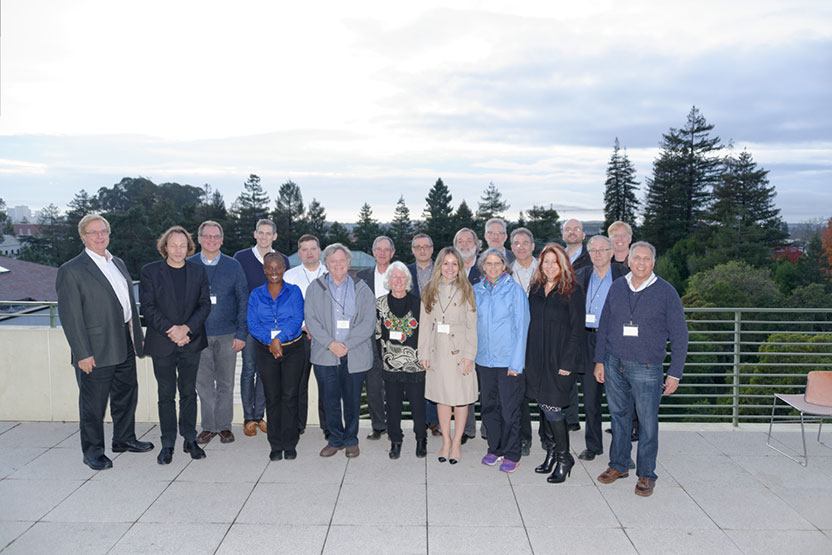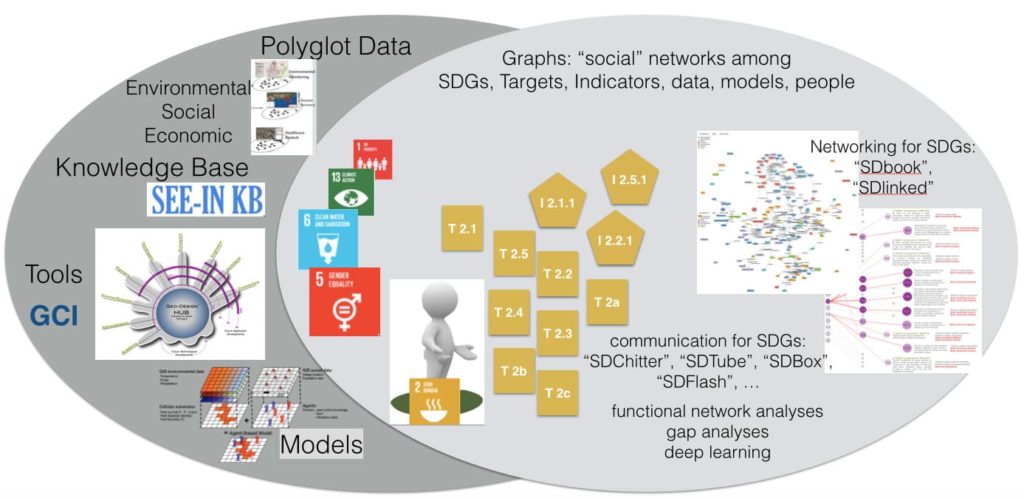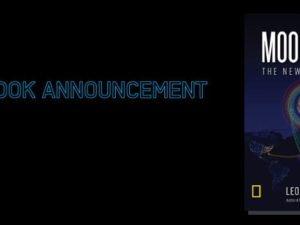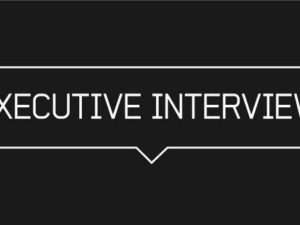
Prof. Hans-Peter Plag, PhD
Mitigation and Adaptation Research Institute
Old Dominion University
Norfolk, Va.
www.mari.odu.edu
The global community is not making much progress towards sustainability and the current economic and environmental development is not sustainable—even the rapid technological, social and political developments carry many threats that might throw civilization back into less developed times. The World Economic Forum just published the Global Risk Report 20171 indicating that extreme weather events, large-scale involuntary migration, major natural disasters, large-scale terrorist attacks, and massive incidents of data fraud/theft are considered the most likely global risks (starting with the most likely one), while the most impactful ones may be weapons of mass destruction, extreme weather events, water crises, major natural disasters, and failure of climate-change mitigation and adaptation. At the same time, the world’s governments are aiming to implement the United Nations resolution on “Transforming Our World: The 2030 Agenda for Sustainable Development,”2 which sets seventeen very ambitious Sustainable Development Goals (SDGs) to be reached by 2030.
In Earth observation communities such as the Group on Earth Observations (GEO) and a number of related United Nations agencies, focus is on the SDG Indicator Framework as a means to measure progress towards the SDG Targets. Each goal comes with up to ten specific targets, and for them, up to two indicators have been defined.3 However, focusing on the measure carries the danger of the measure corrupting the process. More than 40 years ago the sociologist Donald T. Campbell and the economist Charles Goodhart reached the conclusion that, “when a measure becomes a target, it ceases to be a good measure.”
There are many examples demonstrating this law.4 In policy making and implementation, putting too much emphasis on the indicators may lead to “policy-based evidence making” instead of “evidence-based policy making.” “Policy-based evidence making” refers to the research that aims to support a policy that has already been decided upon. For the implementation of the 2030 Agenda and for reaching the SDGs, a sole focus on the indicator framework can easily lead to such policy-based evidence making.
What is needed is a global effort to create the knowledge required for evidence-based policies helping us to reach the SDGs. As the title of the UN resolution indicates, to achieve the SDGs, we need to transform our world. But do we know how we can achieve this transformation? The unsustainability of the current global trajectory and the global consensus of reaching these goals introduces an unparalleled urgency to develop the necessary transformation knowledge (Figure 1). The SDGs present policy makers with a complexity individually and through many interconnections.5,6,7,8
At a recent workshop, the 5th GEOSS Science and Technology Stakeholder Workshop held at the University of California, Berkeley on December 9-10, 2016,9 we came together to discuss means to create the transformation knowledge (Figure 1). Our focus was on creating a platform to link those engaged in the implementation of the goals to knowledge derived from Earth observations and models, and to enable them to use this knowledge. During this workshop, I realized that the current approach of many societal actors aiming to contribute in one way or another to the monitoring and implementation of the 2030 Agenda may not lead to an overwhelming success, if any.

FIGURE 1. Participants at the 5th GEOSS Science and Technology Stakeholder Workshop on “Linking the Sustainable Development Goals to Earth Observations, Models and Capacity Building,” December 9-10, 2016, Berkeley, California.
FIGURE 1. Participants at the 5th GEOSS Science and Technology Stakeholder Workshop on “Linking the Sustainable Development Goals to Earth Observations, Models and Capacity Building,” December 9-10, 2016, Berkeley, California.
First of all, we have to acknowledge that the SDGs came into a world that is not prepared or favorable to them. For each of the SDGs, the current trajectory is not pointing toward success. How can each SDG from the meager beginning in an unsupportive environment grow into a successful goal? What are the interventions needed to achieve the change in the current trajectories so that we get closer to the goals? Considering the wide range of issues addressed by the SDGs, it is clear that interventions have to be tailored for each SDG. There are many interdependencies between them and many potential conflicts, which require coordination, networking, and communication among the players.
With this in mind, I started to think of each SDG as a person, a young person aiming to grow up into a successful adult achieving ambitious goals. I compared them to a little girl being born into an informal settlement under very unfavorable conditions aiming to become the president of her country—a vision very difficult to achieve, or to a little boy being the son of a single mother with very limited means dreaming of winning the Heisman Trophy one day. If we want to help the girl or boy, we need to see the world around them through their eyes and thus realize their challenges, needs, capabilities, and determination. We have to walk in their shoes.
Using this analogy, I realized that trying to “contribute” to the SDGs without making this effort will likely fail in the same way as trying to help the girl and boy will likely fail if we don’t see the world through their eyes. For example, the personi ed SDG #5 aiming for gender equality sees a world with grave inequalities and a wide variety of obstacles on the way to gender equality, depending on the specific economic, environmental, cultural, religious, and historical conditions. We have to come up with many interventions to reach the assigned targets on our way to a transformed world with equal rights for all men and women.
“In this SDG world, the SDGs, targets, indicators and other elements will have networking means, similar to Facebook and LinkedIn, but tailored for the diversity of the elements. Communication tools similar the Twitter, YouTube, Dropbox, and Instagram but designed for the needs of the SDG world will allow rapid and efFIcient exchange of information between all elements and a communication with the world at large.”
The SDG #2 (No Hunger) looks at the world of today, a world with more than 790 million people without reliable access to sufficient food, and a path in front of it with many decisions to be made to create a better world by 2030 where nobody suffers from hunger (Figure 2). This personified goal will have to answer many questions to reach the targets assigned to it: What should I do to achieve my goal? What do I need to learn? Do I fully understand the challenge? What needs to be implemented? Who is going to be impacted by what I do? Who can help me? What are the obstacles and threats that might hamper progress?

FIGURE 2. The Life of an SDG: #2 aiming at “No Hunger” is born into a world not in favor of the goal. “More than 790 million people worldwide still lack regular access to adequate amounts of dietary energy.”12 This goal has the task to transform the world so that by 2030 all people have enough to eat, and for that it was give a number of specific targets to be reached on the way. This raises many questions the goal has to answer in order to be a successful goal.
FIGURE 2. The Life of an SDG: #2 aiming at “No Hunger” is born into a world not in favor of the goal. “More than 790 million people worldwide still lack regular access to adequate amounts of dietary energy.”12 This goal has the task to transform the world so that by 2030 all people have enough to eat, and for that it was give a number of specific targets to be reached on the way. This raises many questions the goal has to answer in order to be a successful goal.
Each goal will need a lot of traditional elements, such as polyglot data informing about the state and trends in the Earth system including the built environment and the social fabric embedded in this environment, knowledge bases providing access to knowledge and information, tools to work with data, and models to explore possible futures. However, to fully capture the connectivity of challenges, people, information needs, knowledge, and solutions, it will be important to construct graph data representing all the SDGs, their targets and indicators, those engaged in helping the SDGs on their way to a transformed future, their positions, activities and responsibilities, their decision making processes and knowledge needs, as well as the linkages between the goals, people, applications,
policies, activities, and needs.
Of equal importance is to create a “world of SDGs” in which all the elements of SDG implementation can communicate with each other (Figure 3). In this SDG world, the SDGs, targets, indicators and other elements will have networking means, similar to Facebook and LinkedIn, but tailored for the diversity of the elements. Communication tools similar the Twitter, YouTube, Dropbox, and Instagram but designed for the needs of the SDG world will allow rapid and ef cient exchange of information between all elements and a communication with the world at large. Analysis of the graph data and the communications will help to identify needs, document progress, and enable a deep learning bene ting the development of the goals into successful “adults.”
The Secretary-General of the United Nations wrote in 2013, “The world’s quest for dignity, peace, prosperity, justice, sustainability and an end to poverty has reached an unprecedented moment of urgency,”10 and he underlined the urgency in “The Road to Dignity” report in 2014.11 Recent social and political developments, particularly the looming “post-truth” world of “alternative facts” have not reduced the urgency, but rather increased it.
Creating this urgency may require some form of competition among the goals and the governments. Achieving the SDGs requires the world to watch how the goals supported by the governments make their way to 2030. Let’s design an SDG world such that we can watch the governments compete to be the best in enabling the SDGs to be successful in transforming the world into a better place

FIGURE 3. The World of the SDGs: While the traditional support for policy making and implementation are all important, (such as polyglot data, knowledge bases, tools to access, integrate, analyze, and visualize data, and models to carry out simulations), there is a need to create a world of SDGs, in which the SDGs, Targets, and Indicators all can interact in social networks with dedicated tools for networking, communication, and analyses.
FIGURE 3. The World of the SDGs: While the traditional support for policy making and implementation are all important, (such as polyglot data, knowledge bases, tools to access, integrate, analyze, and visualize data, and models to carry out simulations), there is a need to create a world of SDGs, in which the SDGs, Targets, and Indicators all can interact in social networks with dedicated tools for networking, communication, and analyses.
References
1. World Economic Forum, 2017. Global Risk Report 2017. World Economic Forum, Geneva. http://www3.weforum.org/docs/
GRR17_Report_web.pdf.
2. UnitedNations,2015.TransformingOurWorld:The2030
Agenda for Sustainable Development. Resolution adopted by the General Assembly on 25 September 2015. http:// www.un.org/ga/search/view_doc.asp?symbol=A/ RES/70/1&Lang=E.
3. United Nations, 2015. Sustainable Development Platform: Sustainable Development Goals. https:// sustainabledevelopment.un.org/sdgs.
4. Rathi, A., 2016. Scientists have been caught manipulating data too many times. They must mend their ways before they lose public trust. Quartz Daily Mail, September 24, 2016. https:// qz.com/789489/scientists-have-been-caught-manipulating- data-too-many-times-they-must-mend-their-ways-before-they- lose-public-trust/.
5. Jules-Plag, S. & Plag, H.-P., 2016. Supporting Agenda 2030’s Sustainable Development Goals – Agenda-based Models and GeoDesign, Apogeo Spatial, 31(4), 24–30.
6. Jules-Plag, S. & Plag, H.-P., 2016. Supporting the Implementation of SDGs, Geospatial World, 08/15/2016, http://www. geospatialworld.net/article/supporting–implementation–sdgs/.
7. Obersteiner, M., Walsh, B., Frank, S., Havlik, P., Cantele, M., Liu, J., Palazzo, A., Herrero, M., Lu, Y., Mosnier, A., Valin, H., Riahi, K., Kraxner, F., Fritz, S., & van Vuuren, D., 2016. Assessing the land resource–food price nexus of the sustainable development goals, Science Advances, 2(9), 10.1126/sci-adv.1501499.
8. Nilsson, M., Griggs, D., & Visbeck, M., 2016. Policy: Map the interactions between sustainable development goals, Nature, 534, 320–322, doi:10.1038/534320a.
9. See http://www.gstss.org/2016_Berkeley.
10. United Nations, 2013. A life of dignity for all: accelerating
progress towards the Millennium Development Goals and advancing the United Nations development agenda beyond 2015. Report of the Secretary-General. http://www.un.org/ millenniumgoals/pdf/A%20Life%20of%20Dignity%20 for%20All.pdf.
11. United Nations, 2014. The Road to Dignity by 2030: Ending Poverty, Transforming All Lives and Protecting the Planet. Synthesis Report of the Secretary-General on the Post-2015 Agenda. http://www.un.org/disabilities/documents/reports/ SG_Synthesis_Report_Road_to_Dignity_by_2030.pdf.
12. United Nations, 2016. “Progress Towards the Sustainable Development Goals,” United Nations, E/2016/75, Report of the Secretary-General, http://www.un.org/ga/search/view_doc. asp?symbol=E/2016/75&Lang=E.



